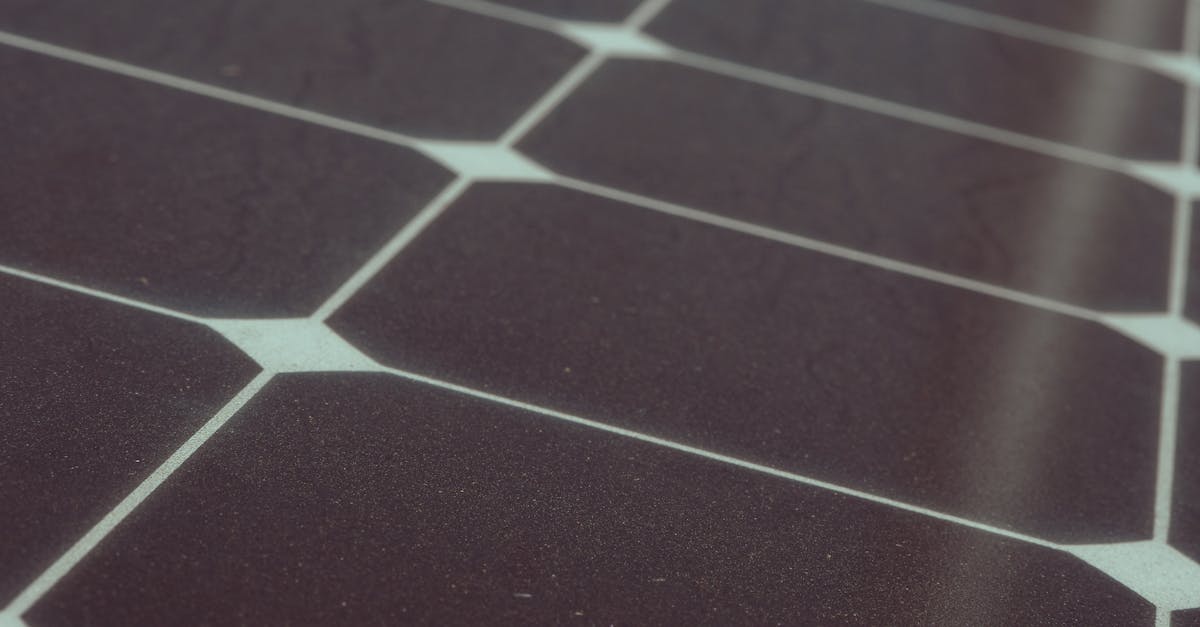
Why is a site assessment crucial before installation
Maximising Efficiency in Installation
Conducting a site assessment prior to installation allows for a comprehensive understanding of the specific conditions present. These insights facilitate informed decisions about methods and timelines. Knowing the layout, potential obstacles, and local regulations can help streamline operations. This preparation ultimately minimises delays and reduces the risk of costly errors during the installation process.
Identifying the logistical needs early on leaves room for calculated adjustments. When the necessary resources, machinery, and human capital are aligned with the specifics of the site, teams can work more cohesively and productively. Anticipating challenges beforehand not only saves time but also ensures that each step taken adds value to the project. An effective approach to site assessment often translates into a smoother overall execution.
Streamlining the Process
A comprehensive site assessment provides all stakeholders with a clear understanding of the project landscape. Identifying obstacles early on can prevent potential delays and complications during the installation phase. Key factors like terrain conditions, accessibility, and existing infrastructure come to light through thorough examination. This clarity allows project teams to develop a more precise timeline, ensuring tasks are executed efficiently.
Effective communication is enhanced when everyone involved has a thorough understanding of the site conditions. Engaging with local authorities and stakeholders becomes smoother with accurate data in hand. This fosters collaboration and helps align expectations across the board. A well-prepared approach ultimately minimises the chances of unexpected surprises during installation, leading to a more streamlined workflow.
Evaluating Environmental Impact
Conducting a thorough assessment of potential environmental impacts helps to identify any potential risks associated with the installation. This includes analysing the site's ecosystems, wildlife habitats, and the presence of protected species. Understanding how the proposed project may disrupt local flora and fauna is essential for minimising negative effects. Stakeholder engagement is also vital, as local communities may possess insights or concerns regarding environmental conservation.
Furthermore, regulations often mandate environmental assessments before project approval. These regulations ensure compliance with local laws and promote sustainable practices. Assessing the potential for soil erosion, water pollution, and air quality degradation can guide the implementation of mitigation strategies. Effective planning can help maintain ecological balance while achieving project goals.
Sustainability Considerations
Assessing the sustainability of a site before installation is integral to ensuring that the project aligns with environmental goals. A thorough evaluation can highlight local biodiversity, geological features, and existing ecosystems, allowing for strategies that minimise disruption. Understanding these factors informs decisions regarding the preservation of natural habitats, which can be vital in maintaining ecological balance.
Moreover, sustainability considerations also include evaluating the long-term impact of the installation on energy consumption and resource usage. By opting for materials and methods that promote efficiency, it becomes possible to reduce the carbon footprint associated with the project. This not only benefits the environment but can also lead to cost savings in the long run through reduced operational costs.
Determining Necessary Resources
Assessing the site helps identify all necessary materials and equipment required for installation. Engaging with relevant stakeholders ensures that all needs are addressed, including manpower, machinery, and tools. This comprehensive understanding allows for a more accurate estimate of what will be required on-site, reducing unforeseen delays and complications later on.
Planning for the installation phase incorporates a clear budget for resource allocation. Knowing exactly what resources will be essential helps in preventing overspending. It also allows for better negotiation with suppliers to secure the best prices for materials and services, ultimately leading to a more efficient and cost-effective installation process.
Budgeting for Installation
An accurate budget is essential for successful installation projects. Taking into account the findings from the site assessment allows for a clearer understanding of potential costs. Discrepancies in budget allocation can arise if unforeseen issues surface during installation, such as site-specific challenges or required modifications. To mitigate these risks, a detailed analysis of the site enables planners to allocate financial resources effectively.
Incorporating all aspects of the project into the budget contributes to smoother execution. This includes not just materials and labour costs but also any necessary permits and potential environmental compliance fees. By considering these factors from the outset, stakeholders can create a comprehensive financial plan that accommodates both expected expenses and unanticipated requirements, ensuring that the project remains on track financially.
FAQS
What is a site assessment?
A site assessment is a comprehensive evaluation of a location to determine its suitability for a specific installation or project, considering factors like environmental conditions, resource availability, and regulatory compliance.
How does a site assessment maximise efficiency in installation?
By identifying potential challenges and opportunities beforehand, a site assessment allows for better planning, resource allocation, and streamlined processes, ultimately leading to a more efficient installation.
What environmental factors are evaluated during a site assessment?
Environmental factors include soil quality, water drainage, local wildlife, vegetation, and any potential impacts on the ecosystem, ensuring that the installation is sustainable and compliant with environmental regulations.
Why are sustainability considerations important in a site assessment?
Sustainability considerations help to minimise negative environmental impacts, promote resource conservation, and ensure that the installation aligns with long-term ecological goals, which is increasingly important in today’s world.
How can a site assessment help with budgeting for installation?
A thorough site assessment identifies necessary resources and potential obstacles, allowing for more accurate cost estimations and better financial planning, which can prevent unexpected expenses and delays during installation.
Related Links
The history of solar panel technology in the UKWhat permits are needed for solar panel installation
Roundup of the best solar panel financing options in the North West
Review of the top solar panel installation companies in the North West
10 benefits of installing solar panels in the North West
Why are solar panels a good investment for homeowners
What to expect during the solar panel installation process
How to prepare for a solar panel installation